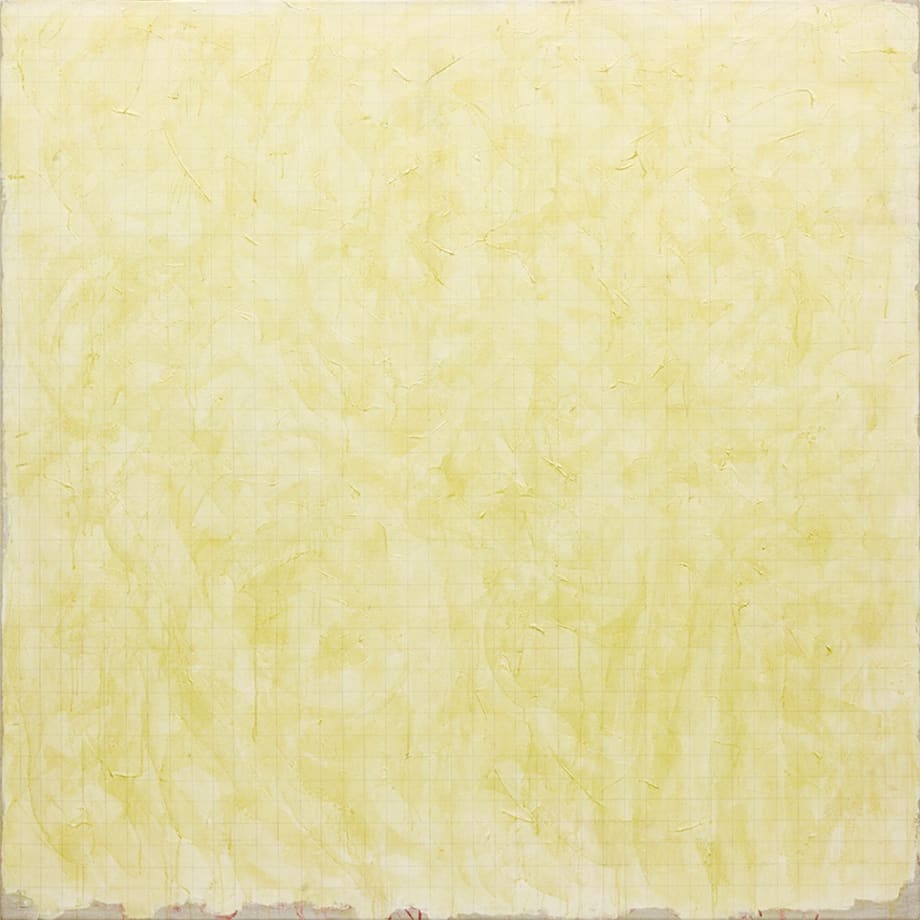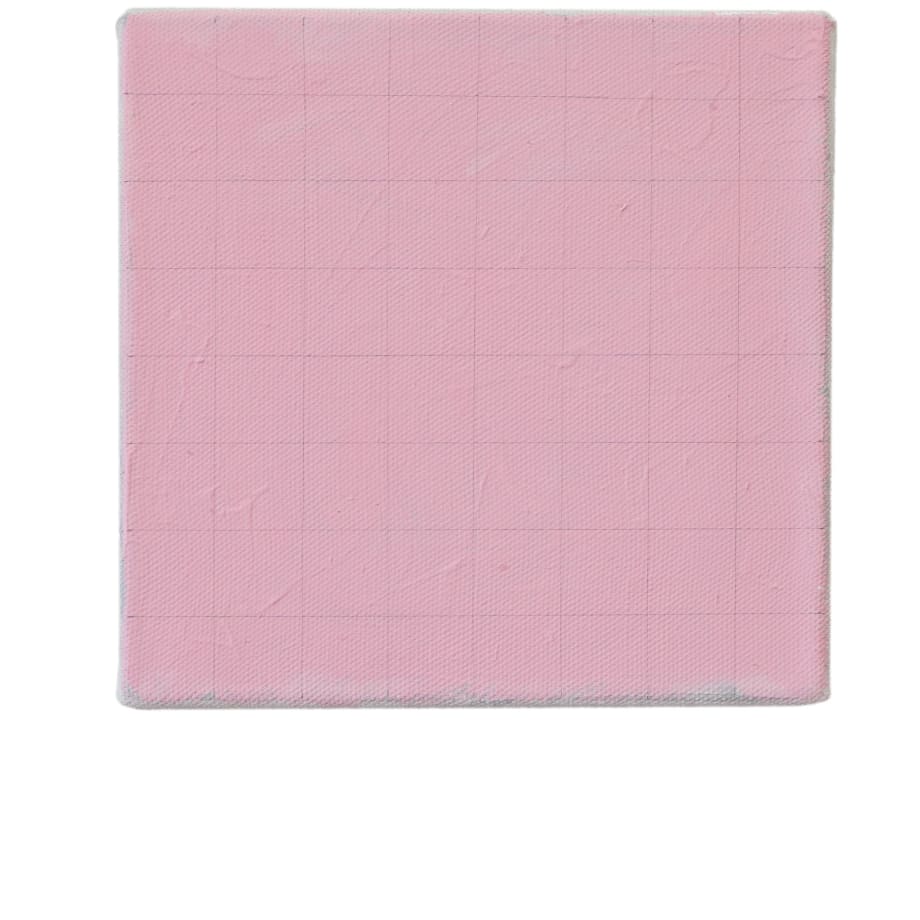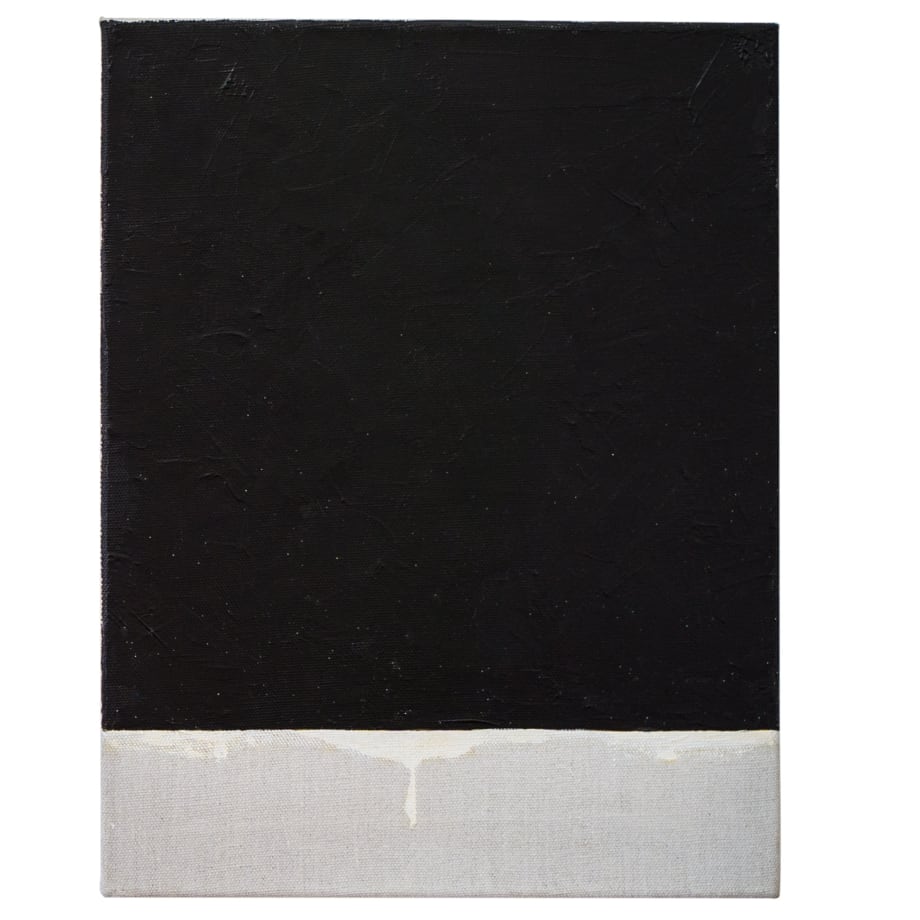The second act of the vast, specific survey dedicated to the artist's works from the 1980s is on display, just as in the Genoa location. In this period, his painting, constantly moving further and further away from purely executive modalities, enters the living mystery of colour/light, nourished by an unexpected expressiveness.
With his monochromes, the artist established himself on the international scene, at least from the time of the memorable 1975 exhibition “Fundamental schilderkunst: Fundamental paintingin” the Stedelijk Museum Amsterdam. At the beginning of the following decade, Rajlich abandoned the primacy of black and white in systemic painting and opened up to the ineffable beauty of gold, the breezes of distant blue and a dull, chaste red.
It is true, he was still working with monochromes, but the gold has very different implications in those Golden Times. In a fundamental essay from 1993, Flaminio Gualdoni wrote: ‘With even greater determination, Rajlich operates on the plane of the saturated image; but now this saturation does not only concern vision; it is rather a plenitude that involves the very idea of light associated, in our culture, with the sense of colour and supernatural vertigo. This is the moment of the outburst, if only in the operational clarity of one who can but regard painting as an autonomous, physical basis of language and meaning, of more than an echo of wisdom’.
Numerous works will be exhibited in which gold is the dominant visual element, as well as the no less famous triadic works in which it is associated with colours that proudly reveal their very own nature. In parallel, a synthetic nucleus of paintings will be shown, published in his memorable book 100 SMALL PAINTINGS, which clearly show the lucid determination that has accompanied Rajlich throughout the various phases of his work.
To mark the occasion, ABC-ARTE will publish a catalogue with all the works on show, accompanied by a critical essay by Davide Ferri and an introduction by Flaminio Gualdoni.
Biography
Tomas Rajlich (1940) studied at the School of Decorative Arts and the Fine Art Academy of Prague. In 1967 he founded the group Klub Konkretistů, which was orientated towards the international neo-avantgardes represented by Azimut in Italy, ZERO in Germany and Nul in the Netherlands. In 1968 his work was first presented on the international scene when he participated in the exhibition Sculpture Tchécoslovaque in the Musée Rodin in Paris.
He went into exile from Czechoslovakia in 1969 after the Soviet invasion and moved to Netherlands, where he became a teacher at the Vrije Academie in The Hague. Rajlich’s interest in the construction of monochrome works on geometrically regular grids was immediately viewed favourably in the climate of Dutch conceptualism.
He held fundamental solo exhibitions in 1974 in the Yvon Lambert gallery in Paris, Art & Project in Amsterdam, and Françoise Lambert in Milan, which were his key galleries for many years. In 1975 he featured with Brice Marden, Robert Ryman, Gerhard Richter and others in the memorable exhibition “Fundamentele schilderkunst: Fundamental painting” in the Stedelijk Museum Amsterdam. It was a milestone in the international recognition of analytical painting.
In the following years Rajlich was invited to show his work in such fundamental exhibitions as “Elementaire Vormen” (travelling exhibition, 1975), “Fractures du Monochrome aujourd’hui en Europe” (Musée d'Art Moderne de la Ville de Paris, 1978) and “Bilder ohne Bilder” (Rheinisches Landesmuseum Bonn, 1978).
Rajlich’s canvases show an ongoing concern with the “fundamental” in painting, not unlike contemporary work by the American Minimalist painters. His early works are characterized by an industrial outlook and a modular quality – their trademark is the grid –, while Rajlich’s mature works show a more complex treatment of the key idea that painting is a self-reflective entity. His recent monochromes explore the combination of the impersonal, the gestural and the creative force of light; they are variations on the intensity, luminosity and facture of the paint, all while clearly remaining a factual painting.
His first retrospective was held in Palazzo Martinengo, Brescia in 1993. His adoptive country, the Netherlands, honoured Rajlich with the prestigious Ouborg Award for his artistic contribution in 1994. On that occasion the Gemeentemuseum in The Hague inaugurated a second retrospective. Ten years later, in 2005, the same museum marked his sixty-fifth birthday with a retrospective of his works on paper.
In Czech Republic, the Dům umění města Brna organised an anthological exhibition in 1998, while in 2008 the National Gallery of Prague opened a retrospective with 27 large canvases, followed by a one-man show in the Gemeentemuseum in The Hague in 2016, Museum Kampa in Prague in 2017, and Museum Boijmans-Van Beuningen in Rotterdam in 2018.
Rajlich is rightly recognised as one of the leading figures of the international neo-avantgarde.
From 1999 to 2002 he was artist in residence at the Centre Georges Pompidou in Paris, whose collection includes works by him. His works are also held by the Centraal Museum, Utrecht, the Musée d’Art et d’Industrie, Saint Étienne, the Musée Cantini, Marseille, Museum Boijmans-Van Beuningen, Rotterdam, the Museum of Modern Art, New York, the National Gallery, Prague, the Peter Stuyvesant Foundation, Amsterdam, the National Gallery of Canada, Ottawa, the S.M.A.K., Ghent, the Stedelijk Museum Amsterdam, the Stedelijk Museum Schiedam, the Stedelijk Museum De Lakenhal, Leiden, and the Stedelijk Museum Het Prinsenhof, Delft.






